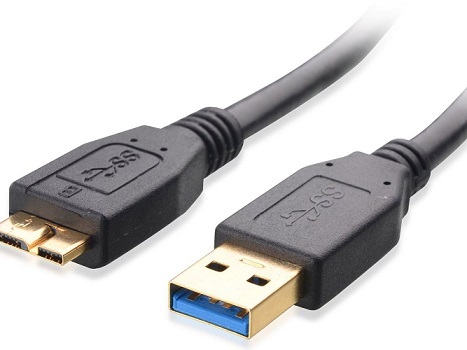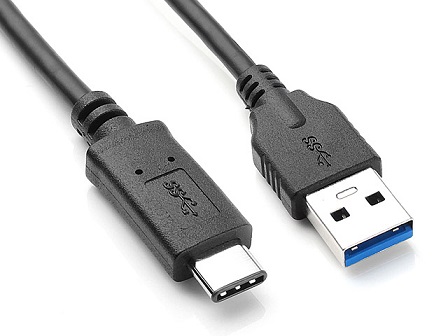USB stands for “Universal serial bus” and is the most important connectivity option available in the industry for more than 2 decades. There have been a lot of variations and upgrades in the USB connectivity in the past, which has greatly increased the data transfer as well as power transfer capacity of USB peripherals.
Nowadays, you will come across options like USB 3.0, USB 3.1, USB type C ports and much more. All of these ports serve a suitable purpose, and you should have detailed information about these options before selecting a laptop or a motherboard. As USB ports are mounted on motherboards, it is impossible to upgrade USB connectivity later on. Hence, it is crucial to understand these options and select the one that fits your requirements perfectly.
Today, we will dive into the most popular choices available for USB, which are USB 3.0 and USB 3.1. We will try to understand both of these options and compare them on the basis of factors like data transfer speed, power delivery, generations, etc. Thus, we will strongly recommend you to stick until the end of our guide to understanding USB 3.0 and USB 3.1 options completely.
Outline
ToggleWhat is USB 3.0?
USB 3.0 is the successor to the USB 2.0 generation, and it was released back in 2008. This makes it a nearly a decade old option. Still, USB 3.0 completely revolutionized USB connectivity as this generation was capable of providing astounding data transfer speeds. In comparison to its predecessor, the USB 3.0 generation ports and cables were capable of providing up to 10 times faster data transfer speeds.
You can find multiple options available for USB 3.0 generation, such as USB type A, USB type B, and even USB type C ports which will provide you similar data transfer speeds in comparison. USB 3.0 is also called USB 3.1 gen 1 in some instances, which might confuse the consumer thinking that the USB port is of later generation. But keep in mind that USB 3.1 gen 1 is just another nomenclature for USB 3.0 ports, providing identical performance and data transfer speeds. You can quickly identify USB 3.0 ports as they are blue in color.
What is USB 3.1?
USB 3.1 is one of the latest generations of USB ports and cables which provides nearly double the data transfer speed compared to the USB 3.0 port. Right now, you will find at least one USB 3.1 port on the latest generation motherboards and laptops, if not more. There are also a few additions to the USB 3.1 series, such as USB 3.1 gen 2 and so on, which further improved the data transfer speeds and power capacity of the port.
USB 3.1 ports are visually similar to the USB 3.0 ports as both ports are blue in color. Still, you can recognize that USB 3.1 ports are teal blue whereas USB 3.0 ports are dark blue in color. You can also find yellow, orange, or red-coloured USB 3.1 ports that offer additional features such as high power delivery and are capable of charging your devices even when the computer is in sleep mode.
Comparison of USB 3.0 vs 3.1
As we mentioned earlier, USB 3.0 is also called USB 3.1 gen 1. Hence, the actual comparison is between USB 3.1 gen 1 and USB 3.1 gen 2 USB ports. As USB 3.1 gen 2 ports are the most recent options in the market, you will be getting much better performance on these ports.
Here’s a basic comparison between USB 3.0 and USB 3.1 ports:
| Factors | USB 3.0 | USB 3.1 |
| Release year | 2008 | 2013 |
| Alternate nomenclature | SuperSpeed USB, USB 3.1 gen 1 | SuperSpeed+, USB 3.1 gen 2 |
| Data transfer speed | Up to 5 Gbps | Up to 10 Gbps |
| Port colors | Blue USB ports | Teal blue, orange, yellow or red USB ports |
| Power delivery capacity | 4.5 watts | Up to 100 watts with EMCA cables |
| Compatibility | USB 3.0 cables are backward compatible with USB 2.0 | USB 3.1 gen 2 cables are compatible with USB 3.0 ports |
| Suitable application | USB powered peripherals, USB audio cards, USB network cards | High-speed data transfer via supported external hard drives and USB drives |
Data Transfer Rate of USB 3.0 and USB 3.1
The USB 2.0 ports were capable of providing up to 480 Mbps data transfer speed which was good enough for the time being. But, it turned out to be quite slow after a while. Hence, USB 3.0 ports were introduced. The USB 3.0 connections allowed almost 10 times faster data transfer speed compared to USB 2.0 ports. Even now, the USB 3.0 ports are capable of providing a very fast data transfer rate of up to 5 Gbps which can be approximately converted to 600+ MBps.
USB 3.1 gen 2 ports are yet another generational improvement on USB ports as it has nearly doubled the data transfer speed compared to USB 3.0 or USB 3.1 gen 1 port. Currently, USB 3.1 gen 2 ports are capable of transferring data at an astounding 10 Gbps, which is around 1250 MBps or 1.25 GBps.
There is also an additional installment in the USB category, which is the USB 3.2 gen 2×2 which promises up to 20 Gbps data transfer speed by utilizing dual 10 Gbps data transfer lanes at once.
Who Can Use USB 3.0 and 3.1?
Newer versions of USBs can be a bit confusing for a normal consumer, especially because of the challenging naming scheme of the current and upcoming USB generations and the variations in their performance.
Also, newer generations in USB drives do not make the older generations obsolete instantly. For instance, the USB 3.1 gen 2 has been in the market for quite some time now. But it still has a lower adoption rate and is only available on high-end laptops and desktop motherboards. On the other hand, the USB 3.0 released back in 2008, and its successor USB 3.1 gen 1 is right now the market standard for USB connectivity. You will even find USB 2.0 ports on many budget-focused laptops and motherboards.
Another thing to keep in mind is the backward compatibility of USB ports. Even if your system has the latest generation USB port, it will support last generation USB drives and cables without any problem. Thus, you will not be forced to upgrade your USB drives or cables if you get the latest generation hardware. Although, you will only get up to the previous generation USB speed if you pair a new generation drive with an old generation port or vice versa.
Talking about USB drives, you can already find the USB gen 2 supported USB drives in the market. Also, there are dedicated type C USB drives that support the USB 3.1 gen 2 type C port for very high-speed data transfer.
Hence, the applications for USB 3.0 and USB 3.1 differ a lot. Right now, the USB 3.0 or USB 3.1 gen 1 port offer a great balance between adaptability and data transfer speeds. Thus, it is an ideal choice for all applications. But if high-speed data transfer rate is your major concern, then you should consider getting a USB 3.1 gen 2 port and cables for your system. In case you also get USB 2.0 ports on your laptop or motherboard, you can use them for USB powered peripherals such as USB mouse, keyboard, headphones, etc.
Conclusion
We hope that after reading our comparison between USB 3.0 and USB 3.1, you understand both choices completely and have no doubts about the compatibility, performance, and benefits of each choice. If you are still confused or have a query, you can reach us via the comment section.



